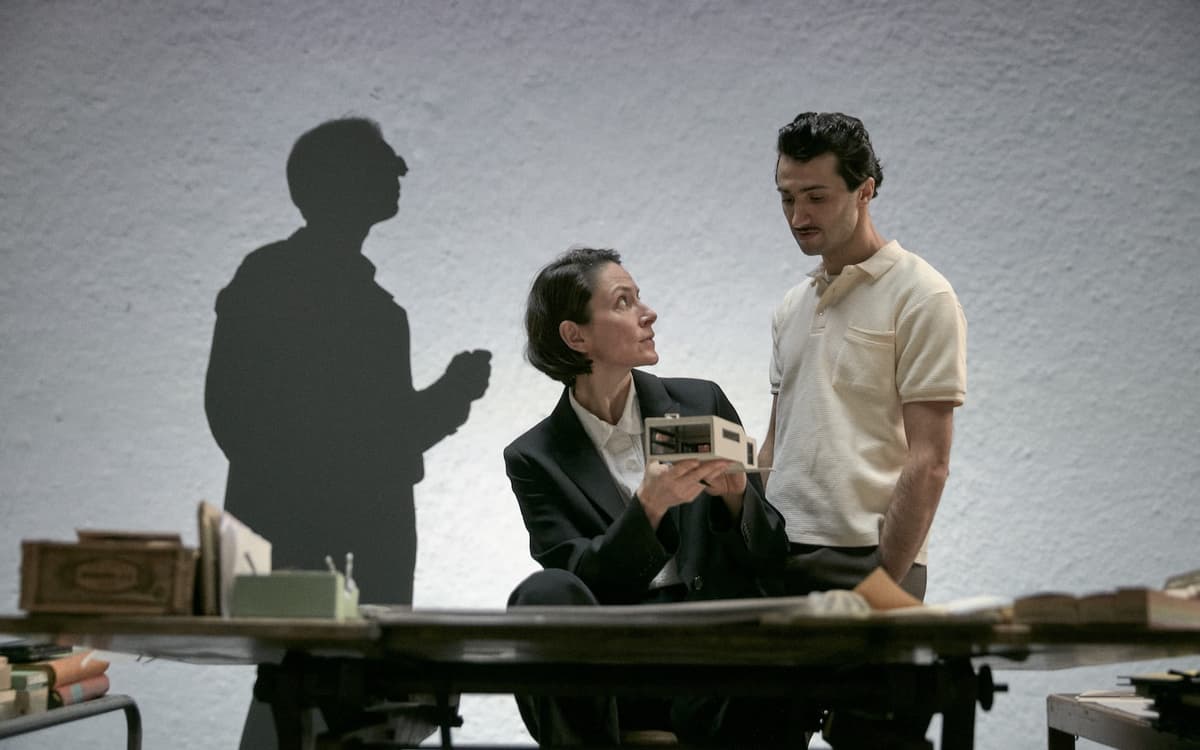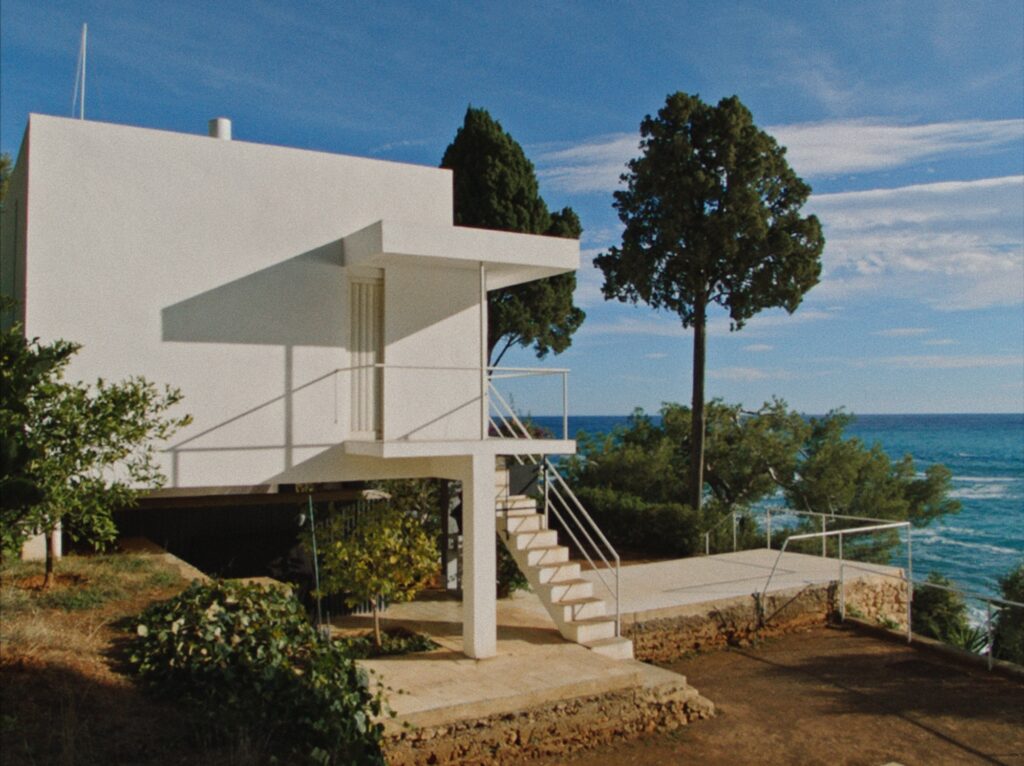A Third Film Focusing on an Irish Designer and Architect, Eileen Gray, Is Weakened by the Filmmakers’ Ambitions
‘Hybrid’ is what this kind of jerry-rigged venture is called by admirers of the form, and one suspects that much of Beatrice Minger and Christopher Schaub’s vision was to distinguish their picture from the other two.

A feature film by Beatrice Minger and Christopher Schaub, “E.1027 — Eileen Gray and the House By the Sea” is a strange creature, being the story of an Irish designer and architect told through historical footage, dramatic recreations of moments in her life, and the employment of arrant artifice in framing them. Traditional documentary means are intercut with avant-theatrical settings, anachronistic flourishes, and a beyond-the-grave narration. Oh, and there’s a culminating dance number.
“Hybrid” is what this kind of jerry-rigged venture is called by admirers of the form, and one suspects that Ms. Minger and Mr. Schaub wanted to distinguish their picture from Marco Orsini’s “Gray Matters” (2014), which is, I gather, a more conventional overview of Gray’s life and work, as well as Mary McGuckian’s “The Price of Desire” (2015), a fiction film that is likely best remembered for having starred a pop singer, Alanis Morissette.
Although the entirety of Gray’s life is glanced upon in “E.1027,” the filmmakers center in on a house she designed at Côte d’Azur, a modest refuge with to-die-for views of the Mediterranean. Her abetter in this project was a Hungarian critic and architect, Jean Badovici, with whom she was romantically involved. The “E” in the name of the building mentioned in the film’s title is code for Eileen, followed by at 10 for Badovici’s first name (“J” being the 10th letter of the alphabet) and then the numerical placements of the first letters of their last names (2 and 7).
The anonymity of the designation is in keeping with a contemporaneous strain of modernism in which the sleek lines, hard surfaces, and utilitarianism of the machine age were held in high esteem. The milieu in which Gray traveled was heady: Among her cohorts were the painters Fernand Leger and Romaine Brooks, a famed “serpentine” dancer, Loïe Fuller, a fashion designer, Jacques Doucet, and a Swiss architect, theorist, and painter, Charles-Édouard Jeanneret, better known to the world as Le Corbusier.
“Corbu” proved a significant influence on the woman born Kathleen Eileen Moray at Brownwood, County Wexford, in Ireland. When Gray’s mother inherited a Scottish peerage, the elder Moray became Baroness Gray, a surname subsequently adopted by Eileen and her siblings. Gray the younger went on to study at the Slade School of Art — she was among the first women to do so — and became a keen admirer of Asian art after a visit to the Victoria and Albert Museum.

The received wisdom on Gray and Badovici is that their collaboration on the seaside retreat humanized the absolutist principles of high modernism. Gray refuted Le Corbusier’s dictum that “a house is a machine for living in” by claiming architecture as the “shell of man, his extension, his release, his spiritual emanation.” Although we see E.1027 during the movie — Ms. Minger and Mr. Schaub were allowed to film in and around its environs — it’s difficult to get a grasp on just how different or antithetical Gray’s work is to the typical International Style building.
Corbusier (Charles Morillon) is the villain of “E.1027.” The pioneering architect would go on to claim that Gray’s home-by-the-sea was his design and his alone, and subsequently painted a series of murals on its walls. Although the frescoes were done with Badovici’s blessing after Gray left him the house upon their break-up, Gray was furious at the news. Did she see photos of a nude Corbu painting his Cubist-inspired images on the sacrosanct white walls of E.1027? Mr. Morillon, clearly a trooper, bares his tuchus in recreating the scene.
If Le Corbusier was a schmuck, Badovici (Axel Moustache) wasn’t much better, promising that E.1027 would be left to Gray in his will and subsequently failing to draft any final papers at all. Gray was her own prickly force of nature, and she’s played with fierce intelligence by Natalie Radmall-Quirke.
Ms. Minger and Mr. Schaub get fine work out of all three actors, but the film’s collage-like structure is a distraction. When we ultimately see a vintage clip of a nonagenarian Gray holding forth, the refrain of an old pop song comes to mind: “Ain’t nothing like the real thing, baby.” In the end, “E.1027 — Eileen Gray and the House By the Sea” is a project whose best intentions are thwarted by the filmmakers’ ambitions/pretensions. Sometimes a not-so-simple story is best told through simple means.

